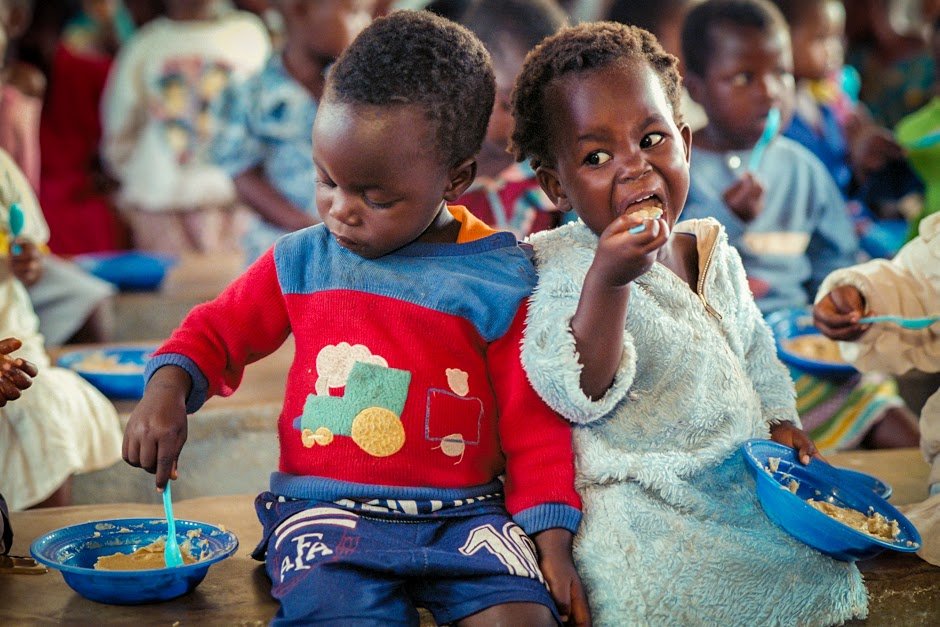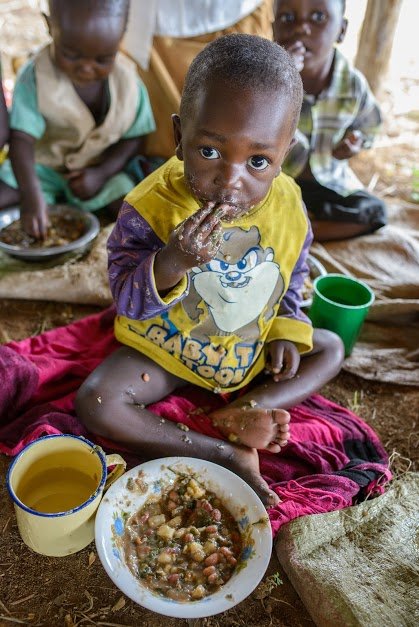This article was contributed by Miriam Yiannakis, Senior Nutrition Policy and Partnerships Advisor, Sustainable Health, World Vision International in support of World Vision and the recently released, 2016 Global Nutrition Report.

The world is off track to reach global targets on nutrition and end malnutrition by 2030. We still have time to reverse this trend. Together, we can build a truly hungerfree world where everyone has access to the right food today, enough food for tomorrow and sustainable food to prevent hunger in the future.
Malnutrition is on the rise in every country in the world. So says the latest Global Nutrition Report launched today by the International Food Policy Research Institute (IFPRI). According to IFPRI’s Lawrence Haddad, “one in three people suffer from some form of malnutrition.” In 2016. What’s worse, Mr Haddad reveals that malnutrition is a leading global driver of disease and includes both under- and over-nutrition.
The Global Nutrition Report is an annual independent stock take of the state of the world’s nutrition. This year’s report headline is that the world has made “insufficient progress in the fight against all forms of malnutrition; for example, almost all countries are off course on efforts to reduce anemia in women and to prevent further increase in diabetes.”
Such global failings take a heavy toll on, not just for children and their families in the most fragile contexts, but those right around the world. The economic losses associated with malnutrition equal the annual losses during the 2008 to 2010 global financial crisis. The number of overweight and obese people in the world now almost equals the number of acutely undernourished children. This, and humanity’s failure to properly address malnutrition, is nothing less than a scandal.
Fortunately, the launch of this year’s Global Nutrition Report provides a key moment for us all to reflect, learn and act. A key call from this year’s report is the emphasis on turning talk into action.

The multi-dimensional approach
In 2012 World Vision committed $1.2 billion USD for nutrition. Now, four years later, we are reflecting on how that investment is impacting lives, and what we must do next to help achieve the ambitious and challenging global goals. World Vision is working alongside communities around the globe to turn our commitments into action. Our programmes prioritise the required multi-dimensional approach to nutrition that not only includes multiple sectors, and multiple players, but also builds the bridges between humanitarian, development and advocacy work. In one example of this, World Vision, together with the Government of Sri Lanka, leads an innovative graduation model that works closely with families to draw up a road-map out of poverty and malnutrition. Learn more here.
With this kind of programming we are seeing demonstrable impact. Recent efforts in Vietnam have shown a 4.2 percentage point decrease in stunting in the 36 area programmes where World Vision supports multi-dimensional programming on nutrition. More on the Vietnam work can be found here.

The smart investment
The Global Nutrition Report also calls for everyone involved in addressing malnutrition to be smarter in how available funding is allocated. World Vision couldn’t agree more. Having all the money in the world, and the best programme designs will make little difference if frontline health workers are insufficiently equipped to carry out the day-to-day work of nutrition plans. This is why we have worked with instructional designers to develop distance learning to meet the capacity needs of front line workers in addressing stunting and anaemia. The courses are tailored to give access to on-the-job learning and mentoring opportunities rarely provided to people who aren’t able to travel to learn. Technical experts guide the learning process and provide 1-to-1 feedback to all learners—all remotely. These courses mean that nutrition funding will be more effective because frontline workers will be better equipped to deliver. More information the courses can be found here.
The knowledge and the will
Today, as I read the Global Nutrition Report, the challenges within don’t get me down. The recent declaration of the Decade of Action on Nutrition that builds on the commitments made by countries at the International Conference on Nutrition, plus the WHO Maternal, Infant and Young Children Targets, and also the Sustainable Development Goals, remind me that we are reaching a groundswell around what needs to be done to ensure proper nutrition for everyone. We all know now that governments and donors need to triple their commitments to nutrition; we also know now what a fantastic investment that really is—not much can beat a return of US$16 for every dollar invested! We know now, more than ever before, what works thanks to examples of progress seen in countries right around the planet. We know now how to share and learn from those examples. So, as the report says, we must all turn talk into action. There are no more excuses.
Find the full report here. Learn more by following @WVHungerFree and #NutritionReport on Twitter.
The views expressed here are not necessarily those of each of the partners of Global Citizen.